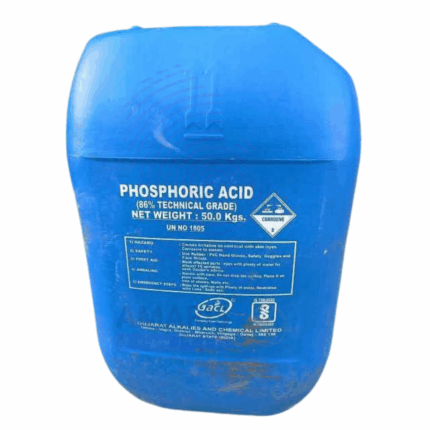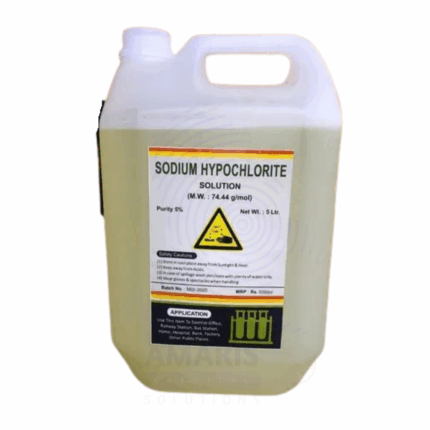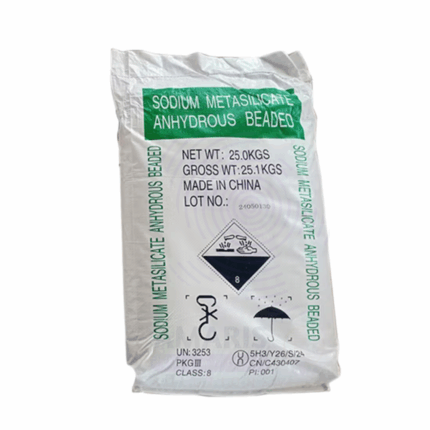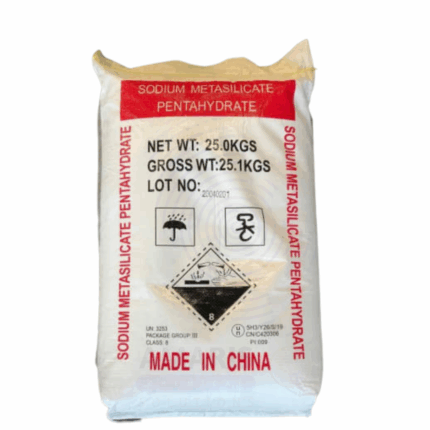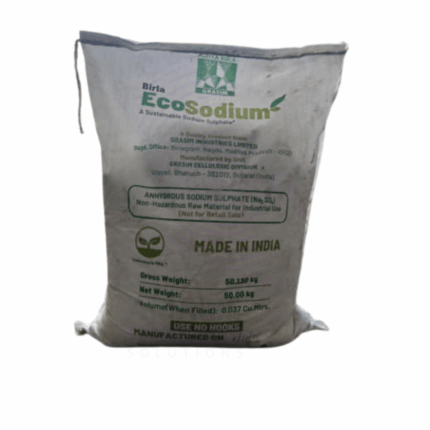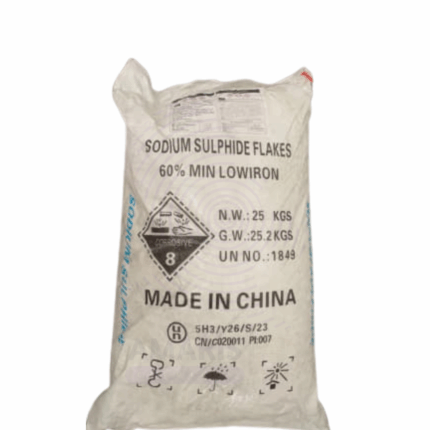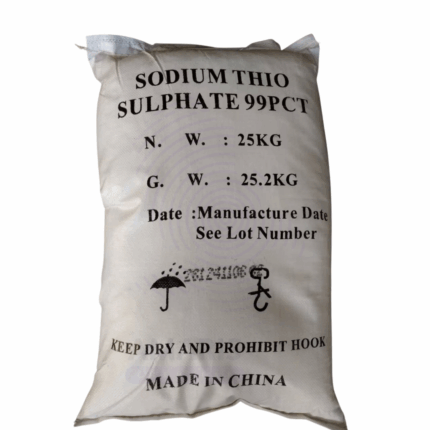Sasol Phenol
Sasol Phenol is a high-purity, industrial-grade phenol produced by Sasol, widely used as a key raw material in the manufacture of plastics, resins, and chemicals. Phenol is an aromatic organic compound characterized by a hydroxyl group (-OH) attached to a benzene ring. It serves as a precursor in producing bisphenol A, caprolactam, and phenolic resins. Sasol Phenol is known for its consistent quality, purity, and suitability for diverse industrial applications including chemical synthesis, pharmaceuticals, and adhesives.
Primary Uses
Chemical Manufacturing
Used as a precursor for bisphenol A, essential in producing polycarbonate plastics and epoxy resins.
Key raw material for phenolic resins used in molding compounds, laminates, and adhesives.
Involved in the production of caprolactam, a monomer for nylon-6 synthesis.
Pharmaceuticals
Used as a solvent and intermediate in the synthesis of various pharmaceuticals.
Industrial Applications
Employed as a disinfectant and antiseptic in industrial settings.
Used in the manufacture of herbicides, dyes, and detergents.
Secondary Uses
Laboratory & Research
Used as a reagent in organic synthesis and analytical chemistry.
Cosmetics
Small amounts are used in some cosmetic formulations as a precursor or solvent, under strict regulatory limits.
Basic Identification Attributes
Chemical Name (IUPAC): Phenol (Hydroxybenzene)
Common/Trade Name: Sasol Phenol
CAS Number: 108-95-2
HS Code: 2907.11
Synonyms: Carbolic acid, Hydroxybenzene
Physical & Chemical Properties
Physical State: Clear, colorless to light pink liquid
Odor: Characteristic phenolic odor
Melting Point: 40.5 °C
Boiling Point: 181.7 °C
Density: Approx. 1.07 g/cm³
Solubility: Miscible with water and organic solvents
Safety & Hazard Attributes
GHS Classification: Toxic, corrosive, flammable
Toxicity: Harmful if inhaled, ingested, or absorbed through skin
Exposure Limits: Follow occupational exposure limits and safety guidelines
Storage & Handling Attributes
Storage Conditions: Store in cool, dry, well-ventilated area away from ignition sources and incompatible materials such as strong oxidizers
Container Type: Supplied in steel drums or tankers with secure sealing
Shelf Life: Stable if stored properly, typically 1-2 years
Handling Precautions: Use full protective equipment; avoid skin contact and inhalation
Regulatory & Compliance Attributes
Complies with international chemical safety regulations including OSHA, REACH, and TSCA
Environmental & Health Impact
Biodegradability: Biodegradable under aerobic conditions
Ecotoxicity: Toxic to aquatic life; avoid environmental discharge
Bioaccumulation: Low potential
PPE Required: Chemical-resistant gloves, goggles, face shield, and protective clothing
Handling Guidelines: Use in well-ventilated areas; avoid inhalation and skin contact
Storage Measures: Keep containers tightly closed and stored in a dry environment
First Aid Measures
Inhalation: Move to fresh air; seek immediate medical attention if symptoms occur
Skin Contact: Wash thoroughly with soap and water; remove contaminated clothing; seek medical advice if irritation persists
Eye Contact: Rinse immediately with plenty of water for at least 15 minutes; get urgent medical care
Ingestion: Do not induce vomiting; seek immediate medical attention
Firefighting Measures
Fire Hazards: Flammable liquid; vapors can form explosive mixtures with air
Extinguishing Media: Foam, dry chemical, CO₂, water spray
Special Precautions: Use full protective equipment and self-contained breathing apparatus
Hazardous Combustion Products: Carbon monoxide, carbon dioxide, phenolic compounds


 Preservatives(food)
Preservatives(food) Flavor Enhancers
Flavor Enhancers Acidulants
Acidulants Sweeteners
Sweeteners Antioxidants
Antioxidants Colorants(food)
Colorants(food) Nutraceutical Ingredients (food)
Nutraceutical Ingredients (food) Nutrient Supplements
Nutrient Supplements Emulsifiers
Emulsifiers
 Collectors
Collectors Dust Suppressants
Dust Suppressants Explosives and Blasting Agents
Explosives and Blasting Agents Flocculants and Coagulants
Flocculants and Coagulants Frothers
Frothers Leaching Agents
Leaching Agents pH Modifiers
pH Modifiers Precious Metal Extraction Agents
Precious Metal Extraction Agents
 Antioxidants(plastic)
Antioxidants(plastic) Colorants (Pigments, Dyes)
Colorants (Pigments, Dyes) Fillers and Reinforcements
Fillers and Reinforcements Flame Retardants
Flame Retardants Monomers
Monomers Plasticizers
Plasticizers Polymerization Initiators
Polymerization Initiators Stabilizers (UV, Heat)
Stabilizers (UV, Heat)
 Antifoaming Agents
Antifoaming Agents Chelating Agents
Chelating Agents Coagulants and Flocculants
Coagulants and Flocculants Corrosion Inhibitors
Corrosion Inhibitors Disinfectants and Biocides
Disinfectants and Biocides Oxidizing Agents
Oxidizing Agents pH Adjusters
pH Adjusters Scale Inhibitors( water)
Scale Inhibitors( water)
 Antioxidants(cosmetic)
Antioxidants(cosmetic) Emollients
Emollients Fragrances and Essential Oils
Fragrances and Essential Oils Humectants
Humectants Preservatives
Preservatives Surfactants(cosmetic)
Surfactants(cosmetic) Thickeners
Thickeners UV Filters
UV Filters
 Fertilizers
Fertilizers Soil Conditioners
Soil Conditioners Plant Growth Regulators
Plant Growth Regulators Animal Feed Additives
Animal Feed Additives Biostimulants
Biostimulants Pesticides (Herbicides, Insecticides, Fungicides)
Pesticides (Herbicides, Insecticides, Fungicides)
 Active Pharmaceutical Ingredients (APIs)
Active Pharmaceutical Ingredients (APIs) Excipients
Excipients Solvents(pharmaceutical)
Solvents(pharmaceutical) Antibiotics
Antibiotics Antiseptics and Disinfectants
Antiseptics and Disinfectants Vaccine Adjuvants
Vaccine Adjuvants Nutraceutical Ingredients (pharmaceutical)
Nutraceutical Ingredients (pharmaceutical) Analgesics & Antipyretics
Analgesics & Antipyretics
 Analytical Reagents
Analytical Reagents Solvents(lab)
Solvents(lab) Chromatography Chemicals
Chromatography Chemicals Spectroscopy Reagents
Spectroscopy Reagents microbiology-and-cell-culture-reagents
microbiology-and-cell-culture-reagents Molecular Biology Reagents
Molecular Biology Reagents Biochemical Reagents
Biochemical Reagents Inorganic and Organic Standards
Inorganic and Organic Standards Laboratory Safety Chemicals
Laboratory Safety Chemicals Specialty Laboratory Chemicals(Special Laboratory Equipment)
Specialty Laboratory Chemicals(Special Laboratory Equipment)
 Demulsifiers
Demulsifiers Hydraulic Fracturing Fluids
Hydraulic Fracturing Fluids Scale Inhibitors(oil)
Scale Inhibitors(oil) Surfactants(oil)
Surfactants(oil) Drilling Fluids
Drilling Fluids
 Dyes and Pigments
Dyes and Pigments Bleaching Agents
Bleaching Agents Softening Agents
Softening Agents Finishing Agents
Finishing Agents Antistatic Agents
Antistatic Agents
 Admixtures
Admixtures Waterproofing Agents
Waterproofing Agents Sealants and Adhesives
Sealants and Adhesives Curing Compounds
Curing Compounds Concrete Repair Chemicals
Concrete Repair Chemicals Anti-Corrosion Coatings
Anti-Corrosion Coatings
 Surfactants(cleaning)
Surfactants(cleaning) Builders
Builders Enzymes
Enzymes Solvents (Cleaning)
Solvents (Cleaning) Fragrances
Fragrances
 Electronic Chemicals
Electronic Chemicals Catalysts
Catalysts Lubricants
Lubricants Photographic Chemicals
Photographic Chemicals Refrigerants
Refrigerants Automotive chemicals
Automotive chemicals Pyrotechnic Chemicals
Pyrotechnic Chemicals
 Biodegradable Surfactants
Biodegradable Surfactants Bio-based Solvents
Bio-based Solvents Renewable Polymers
Renewable Polymers Carbon Capture Chemicals
Carbon Capture Chemicals Wastewater Treatment Chemicals
Wastewater Treatment Chemicals
 Pigments
Pigments Solvents(paint)
Solvents(paint) Specialty Coatings
Specialty Coatings Binders/Resins
Binders/Resins Additives
Additives Driers
Driers Anti-Corrosion Agents
Anti-Corrosion Agents Functional Coatings
Functional Coatings Application-Specific Coatings
Application-Specific Coatings
 Fresh Herbs
Fresh Herbs Ground Spices
Ground Spices Whole Spices
Whole Spices Spice Blends
Spice Blends Dried Herbs
Dried Herbs
 Leavening Agents
Leavening Agents Dough Conditioners
Dough Conditioners Flour Treatments
Flour Treatments Fat Replacers
Fat Replacers Decoratives
Decoratives Preservatives(baking)
Preservatives(baking)
 Plasticizers & Softeners
Plasticizers & Softeners Reinforcing Agents
Reinforcing Agents Adhesion Promoters
Adhesion Promoters Vulcanizing Agents
Vulcanizing Agents Antidegradants
Antidegradants Blowing Agents
Blowing Agents Fillers & Extenders
Fillers & Extenders Accelerators & Retarders
Accelerators & Retarders




